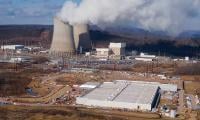The writer is the author of 'Governing the ungovernable'.
Another source of productivity and efficiency is attracting Foreign Direct Investment in export manufacturing and service industries. Pakistan’s FDI flows, although quite negligible relative to neighbouring countries, have been largely market seeking to meet the domestic economy needs – telecom, banking, oil and gas etc.
Studies have found a close correlation between export growth and FDI flows. The export sector in Pakistan has received almost next to nothing and has thus missed a huge opportunity in accessing global supply chains, technology and know-how, design, branding and intellectual property, marketing networks, managerial practices in addition to capital. Both China and Vietnam have benefitted enormously from foreign investors’ presence in export manufacturing. Foreign affiliates of multinational companies do positively influence domestic firms which imitate and adopt the best practices of these affiliates – production techniques, skills and marketing innovation.
In addition, domestic firms acquire managers and executives from these multinationals for key positions. Pakistan presents a good example where most of the chief executives of the leading banks were trained and had served in multinational banks. Similarly, most non-financial corporations are headed by those who had earlier worked in multinational companies, both in their branches abroad and local affiliates. This reservoir of skill set and talent needs to be further expanded and replenished as the earlier cohorts retire. The spillover effects of multinationals in the growth of some of the domestic pharmaceutical companies have been quite positive. As long as these domestic firms continue to invest in R&D and innovation and get themselves certified by the FDA or a European agency, they will be able to make significant contributions to export earnings. Of course, the regulatory hurdles in price setting by the government have to be removed to pave the way for them to compete at a level playing field.
A recent World Bank study has documented that foreign-owned exporting firms in Pakistan are 66 percent more productive than the domestic exporting firms and the productivity of firms that are acquired by multinationals tend to increase after the acquisition. This is a lesson for Pakistani-owned companies to catch up, if not completely then at least partially to the levels achieved by MNCs. The cumulative effect of 30 percent productivity gains would translate into additional annual exports of $8 billion to $9 billion without incurring huge costs.
Under the second phase of CPEC, Special Economic zones (SEZs) are at advanced stages in Gwadar, Rashakai, Faisalabad, Dhabeji for establishing industrial units. Chinese companies that are facing rising labour costs are relocating to Vietnam, Cambodia, Laos etc. The Chinese are ready to choose these SEZ s in Pakistan because of the access to the new port, incentives available, and close political relationship – provided we put our own response capacity to their speed.
Under FTA II with China, 83 percent of Pakistan’s global exports have been liberalised and cover textiles, garments, leather, chemicals, seafood, meat etc. Thus, the landed costs of Pakistani products free of duties and lower transport costs would make them competitive in the Chinese markets compared to other sources. A one percent market share of the Chinese imports would add $20 billion to our total exports. Beyond China, exportable goods manufactured in Pakistan but designed, branded and marketed by Chinese companies through their vast global network would bring additional benefits for both the countries.
With stability in Afghanistan, Pakistani goods to the Central Asian Republics, manufactured in the SEZs and transported under the TIR convention, would become attractive for the consumers of these countries. The proposed World Bank and ADB regional projects connecting these countries through railways and highways would be highly beneficial.
There is a tremendous political and business lobbyist pressure to protect domestic final goods industries by imposing high tariffs. Very few economists would disagree that infant industry argument and learning-by-doing justify timebound performance-related protection. However, in Pakistan we have become used to open ended and continuous extension of concessions, exemptions, and high tariff rates. Entry and exit rates of firms exporting their goods and services are therefore low, product diversification has actually shrunk, sectoral composition remains unchanged from the 1990s, and geographical concentration is elevated.
The latest estimates of effective rates of protection (ERP) are not available but an earlier PIDE study had concluded that these rates had declined in the early 2000s. But the introduction of additional custom duty and regulatory duty in the last five years has increased the ERPs. Average tariff rates and the number of tariff lines were also rationalised (except for a few items) but these have also been tampered in the last decade with the average rate rising from 12 percent in FY15 to almost 20 percent in FY20 – almost twice as much as our competitors and five percent in China. It is not realised that in a world dominated by global value chains, tariffs on imports of components, ancillary supplies and intermediate inputs act as tax on exports. Studies have found that reduction in import duties help minimize input costs in downstream industries, some of whom then become competitive in third country markets.
The iron and steel industry is a prime example where the import tariffs are high, although 90 percent of inputs are imported (including energy). Domestic producers get protection at the expense of the downstream industries – automobiles, construction, consumer electronics, engineering goods. Auto grade steel is not produced domestically, despite a high level of protection, and therefore many types of auto parts cannot be fabricated to replace the imported parts. The same is the case for the pharmaceutical industry, where active ingredients are imported from India and China. It would be difficult for industries which are producing goods in sunrise sectors to scale up their production, reduce unit cost, and become competitive in regional and global markets. They cannot compete in the world markets because of high input costs created by high tariff rates. Static input-output coefficients do not make much sense in fast-moving market dynamics.
The National Tariff Commission, given the responsibility for tariff setting as the FBR was preoccupied with maximising revenue collection, has started doing some good work by removing additional and regulatory duties on raw materials for some industrial products. However, this is not enough as they have to give serious consideration for bringing the average tariff rates to the levels of Pakistan’s competitors by announcing a phasing out timetable for the next few years so that the companies can make adjustments.
Imports of hi-tech goods, essential raw materials, machinery and equipment are essential for economic growth. The popular discourse that ‘imports are harmful and should be discouraged’ as carte blanche needs to be replaced by a more discerning and analytical approach. As long as imports can be financed from export earnings, foreign direct investment and remittances and make a positive contribution in production and exports, there should not be any hesitation. Of course, agrarian products where we have comparative advantage should be substituted by domestic produce. Openness to trade has reignited economies with large domestic markets, such as China and India.
To be continued















